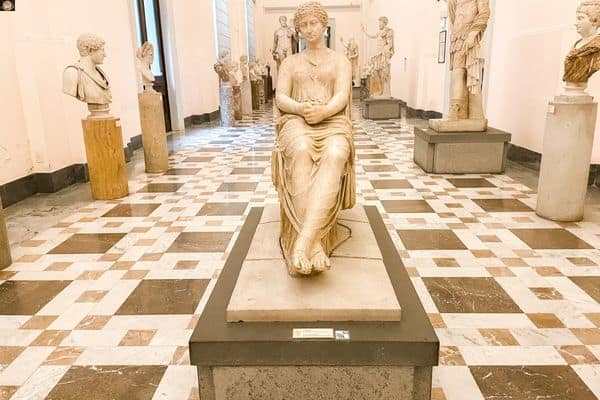In the bustling streets of Rome in 1546, amidst the fervor of excavation, a remarkable discovery was made that would leave scholars and art enthusiasts alike in awe. Tasked by Pope Paul III to seek out statues to adorn the Palazzo Farnese, excavators at the Baths of Caracalla unearthed what would become one of the most significant finds of antiquity: the Farnese Bull. This monumental sculpture, the largest single piece yet recovered from antiquity, now finds its home in Naples at the archaeological museum, a testament to the enduring legacy of ancient craftsmanship.

Crafted during the heyday of the Roman Empire, the Farnese Bull stands as a testament to the skill and ingenuity of ancient artisans. Carved from a single block of marble, this awe-inspiring masterpiece is a marvel of engineering and artistic prowess. Standing over 4 meters high, it commands attention with its sheer size and intricate detail, captivating all who behold it with its majestic presence.
Despite the passage of centuries, the Farnese Bull continues to astonish with its remarkable preservation and exquisite craftsmanship. Originally dated to the reign of Emperor Caracalla (222-235 AD), this monumental sculpture has endured the ravages of time, standing as a testament to the enduring legacy of ancient Rome. Subsequently restored in the 16th century, the addition of small figures around the base, including a dog and child, further enhances its charm and narrative depth.


The restoration of the Farnese Bull not only breathed new life into this ancient masterpiece but also offered valuable insights into the techniques and practices of ancient sculptors. Astonishingly, it is believed that the original craftsmen fashioned this imposing sculpture from a single block of marble, a testament to their skill and craftsmanship. As art historians and archaeologists continue to study and analyze the Farnese Bull, they uncover new layers of meaning and significance, shedding light on the cultural and artistic landscape of ancient Rome.
Archaeologists, with their unwavering dedication to uncovering the mysteries of the past, play a crucial role in preserving and interpreting artifacts like the Farnese Bull. Through meticulous excavation and analysis, they piece together the puzzle of ancient civilizations, offering valuable insights into their customs, beliefs, and artistic achievements. As custodians of our shared heritage, archaeologists ensure that treasures like the Farnese Bull continue to inspire and educate future generations, keeping alive the rich tapestry of human history for years to come.










